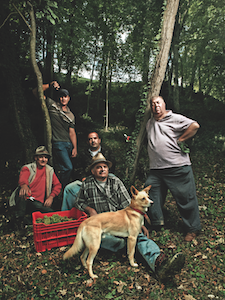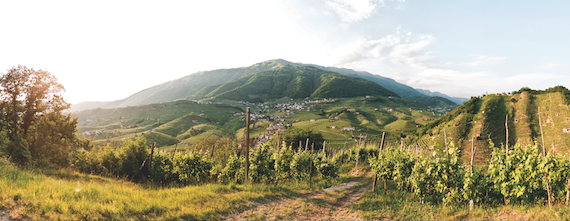Conegliano Valdobbiadene. Not easy to say, is it? Well, according to the winemakers who spend 1,000 hours a year toiling in the prosecco hills, it’s not easy to make the stuff either.
Most consumers don’t know their pain. So far it is the lesser classification of the prosecco region – the DOC, not the DOCG – that has won their hearts. The DOC’s proliferation over the past five years since the growing area was redefined is now what the wine is best known for. It is value-for-money, accessible, fruity sparkling wine. 
But what of the higher-grade DOCG, from the 15 hillside villages around Conegliano and Valdobbiadene? These complex wines of higher acidity and structure are prosecco’s golden standard, from which the region’s reputation first emerged and on which its future credentials as a high-end wine hinge. With DOC making up the majority of the 306m bottles reportedly sold last year (champagne was 304m bottles), it is possible the DOCG’s identity has been lost in the crowd. To your average supermarket consumer at least, the difference between DOC and DOCG is an extra letter in the name and digit on the price tag.
In 2009 Conegliano Valdobbiadene was upgraded from DOC to DOCG because a new DOC was marked out from the planes in the surrounding Treviso region. This was a progressive move as, for years, wines from across Italy had masqueraded as prosecco, throwing up wide-ranging qualities and styles and often damaging the wine style’s reputation.
The new DOC drew a line around the areas that could rightfully be seen as sharing some of the qualities and production standards of the original Prosecco Hills of Conegliano Valdobbiadene. A quality control was also formed and the result was an affordable, consistent sparkling wine that would one day be sold in its hundreds of millions of bottles.
The solution posed an unexpected problem. “Now we can see that the quality of prosecco has improved for everyone, so I’m not worried about the DOC’s expansion. What I am worried about is the consumer does not know the difference between DOC and DOCG. This is a threat,” says Giancarlo Vettorello, director of Consorzio di Tutela del Prosecco di Conegliano Valdobbiadene, which runs the DOCG, independently of the DOC’s Consortium.
But firstly, what are the differences between the wines? Irene Patruno from Bottega, which produces wines across the DOC and DOCG, explains: “The Glera grapes by which the prosecco DOCG are produced, grow only on the hilly area stretched between the towns of Conegliano and Valdobbiadenne. In this area, thanks to the particular soil, climate, sun exposure, the hand-picked care of the vines and the hand-made harvest, the grapes have different characteristics and the wine is – accordingly – different for scents, flavours and texture.”
In marketing parlance, DOC is considered premium (at £6-£10) and DOCG super premium (£10+). The difference in price reflects the difference in production standards. “We need our work to be valued or there is no point in doing what we are doing,” says Vettorello.




